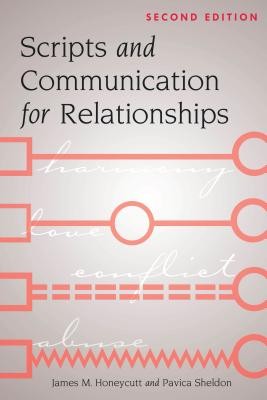
- We will send in 10–14 business days.
- Author: Pavica Sheldon
- Publisher: Peter Lang Inc., International Academic Publishers
- ISBN-10: 1433142171
- ISBN-13: 9781433142178
- Format: 15.2 x 22.9 x 2.1 cm, softcover
- Language: English
- SAVE -10% with code: EXTRA
Reviews
Description
The book is divided into five parts: (1) Emotions, Imagination, and Physiology of Relationships, (2) Bases of Relational Scripts, (3) Relational Escalation and Deescalation, (4) Relationship Scripts in Context, and (5) Cautions and Recommendations. The authors discuss the basis of relationship scripts, emotions, imagery, and physiology of relationships including romance, friendship, work associates, mentors, and Facebook friends. They argue that people's expectations for relational development influence their communication, faith, and commitment in relationships. Misconstruing sexual or flirtatious intent, for example, is derived from having different scripts about attraction. They discuss abusive relationships including characteristics of abusers, stalking, and verbal and physical aggression.
Designed for classes in psychology, communication, sociology, family studies, and social work, this book provides a comprehensive overview of how scripts and communication are used in relationships. Guidelines based on developing and improving verbal and nonverbal communication competence are provided. A downloadable teacher's guide is also available.
EXTRA 10 % discount with code: EXTRA
The promotion ends in 17d.12:15:28
The discount code is valid when purchasing from 10 €. Discounts do not stack.
- Author: Pavica Sheldon
- Publisher: Peter Lang Inc., International Academic Publishers
- ISBN-10: 1433142171
- ISBN-13: 9781433142178
- Format: 15.2 x 22.9 x 2.1 cm, softcover
- Language: English English
The book is divided into five parts: (1) Emotions, Imagination, and Physiology of Relationships, (2) Bases of Relational Scripts, (3) Relational Escalation and Deescalation, (4) Relationship Scripts in Context, and (5) Cautions and Recommendations. The authors discuss the basis of relationship scripts, emotions, imagery, and physiology of relationships including romance, friendship, work associates, mentors, and Facebook friends. They argue that people's expectations for relational development influence their communication, faith, and commitment in relationships. Misconstruing sexual or flirtatious intent, for example, is derived from having different scripts about attraction. They discuss abusive relationships including characteristics of abusers, stalking, and verbal and physical aggression.
Designed for classes in psychology, communication, sociology, family studies, and social work, this book provides a comprehensive overview of how scripts and communication are used in relationships. Guidelines based on developing and improving verbal and nonverbal communication competence are provided. A downloadable teacher's guide is also available.


Reviews